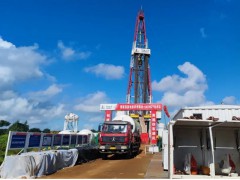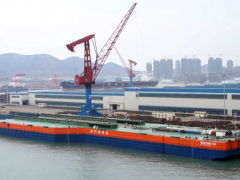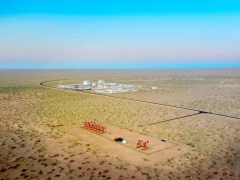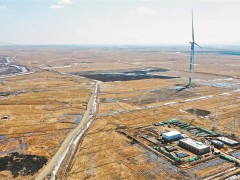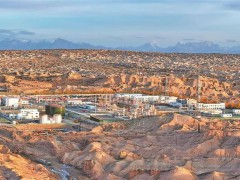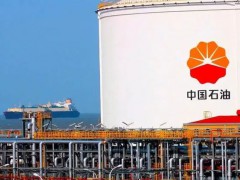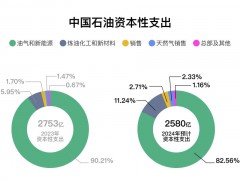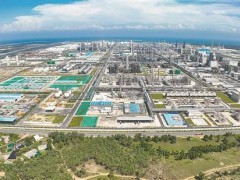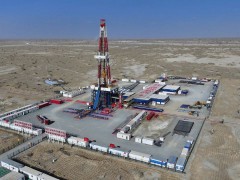据油价网5月16日消息,世界上几个最大的产油国最近公布了提高产能的计划。原因是:石油需求峰值即将到来,各国决心尽其所能充分利用其石油资源。
上月,在提交一份旨在实现这一目标的文件草案时,俄罗斯国家杜马能源委员会主席帕维尔·扎瓦尔尼表示:“应该在仍有需求的情况下,生产一切能生产的产品。”
帕维尔·扎瓦尔尼还在会上表示:“这一战略的主要论点是当前储备和资源的货币化——即最大限度地实现出口货币化。”
俄罗斯是世界三大石油出口国之一,与沙特阿拉伯和美国并列。它的石油储量至少可以维持目前的产量到2080年,天然气储量也可以再维持103年。政府正投入数千亿美元,准确地说是1100亿美元,用于东西伯利亚新石油储量的开发,每年开采1亿吨新原油。这大约是该国2019年年产量的五分之一。
这些石油中的大部分将取代西伯利亚西部日渐枯竭的油田。据俄罗斯能源部称,俄罗斯似乎没有大幅提高当前产量的计划。在疫情前的最后一年,日产量为1130万桶/天,创历史新高。现在,能源部预计,到2029年,目前受到限制的产量将从1030万桶/天上升至1110万桶/天,然后开始下降。换句话说,俄罗斯根据自己的情况,有8年的时间来利用全球石油需求的增长。
然而,对石油需求见顶有各种各样的设想。例如, BP公司预测,在最坏的情况下,石油需求峰值已经到来,在最好的情况下,峰值将在2030年到来。挪威国家石油公司(Equinor)预计,石油需求峰值将在2027年或2028年出现。雷斯塔能源预计需求将在五年内见顶,而国际能源署(IEA)预计需求将在未来十年见顶。总而言之,预测在2030年的范围内。
这意味着,在需求开始稳步下降之前,俄罗斯、沙特阿拉伯、伊拉克和海湾国家等产油国几乎没有时间充分利用其石油储备。随着所有这些国家都在提高产能并制定增产计划,石油市场上的竞争肯定会比现在更加激烈。
在竞争方面,俄罗斯比它的中东伙伴处于更好的位置。它对石油出口收入的依赖一直低于中东产油国。最近,俄罗斯一直在有意减少这种依赖。石油和天然气收入仍占俄罗斯国内生产总值的30%,但随着氢等能源吸引了政府注意,俄罗斯的多元化进程虽然缓慢,但却是必然的。尽管如此,仍有数十亿桶石油埋藏在地下,把它们留在那里将是一个遗憾,因此才有了提高产量的计划。但是谁来买呢?
印度显然是一个候选国家。这个国家消耗的石油有80%依靠进口,因此它喜欢便宜的石油。在印度,俄罗斯将与它的欧佩克伙伴和美国竞争,印度也是美国的主要石油出口目的地。随着需求见顶越来越近,亚洲其它新兴市场也将成为石油出口国的一个关键市场。
然后,根据需求预测,石油生产商似乎会在仍有买家的时候,争先恐后地尽可能多地出售石油。但事实是,石油需求峰值可能确实会在10年或更短的时间内出现,但这并不意味着需求会急剧下降——除非另一场疫情袭击地球。如果没有这种不可预见的事件,石油需求很可能会逐渐下降,给有远见的生产商足够的时间通过提振非石油部门来进行调整。从这个角度来看,俄罗斯有足够的时间减少石油和天然气收入占GDP的比重。它是否会明智地利用这段时间来实现这些目标还有待观察。
裘寅 编译自 油价网
原文如下:
Russia Is Making A Mad Dash To Outrun Peak Oil Demand
Several of the world’s largest oil-producing nations have recently made public plans to boost their production capacity. The reason: peak oil demand is looming and countries are determined to make the most of their oil resources while they can.
“Everything that can be produced should be produced while there is still demand to sell it,” the head of the energy committee at the Duma, the Russian parliament, said last month at the presentation of a draft document aiming to do just that.
“The main thesis in this strategy is the monetization of current reserves and resources – that is, the maximum monetization of exports,” Pavel Zavalny also said at the event.
Russia is one of the three biggest oil exporters in the world, alongside Saudi Arabia and the United States. It has enough oil to keep producing at current rates at least until 2080, with enough gas reserves to last for another 103 years. And the state is pouring billions—$110 billion to be precise—into the development of new oil reserves in eastern Siberia to tap 100 million tons of new crude annually. That’s about a fifth of the country’s annual output in 2019.
Much of this oil will replace depleting fields in western Siberia. According to the Energy Ministry of the country, Russia does not seem to have plans to considerably boost current production rates. In the last pre-pandemic year, the daily production rate was 11.3 million bpd, a record high. Now, the Energy Ministry sees the current - constrained - production rate rising from 10.3 million bpd to 11.1 million bpd by 2029 before beginning to decline. In other words, Russia has eight years to take advantage of growing global oil demand as per its own scenario.
Yet, there are various scenarios for the peak of oil demand. BP, for instance, predicted that in the worst-case scenario peak oil demand has already arrived, and in the best-case scenario, it will come in 2030. Norway’s Equinor expects peak oil demand sometime in 2027 or 2028.
Rystad Energy sees demand peaking in five years, and the International Energy Agency expects peak demand over the next decade. All in all, forecasts are within the range of 2030.
This means producers such as Russia, Saudi Arabia, Iraq, and the Gulf nations have very little time to make the most of their oil reserves before demand begins declining steadily. And with all of these countries boosting their production capacity and making plans for higher production, competition in the oil market is bound to become even more severe than it is now.
When it comes to competition, Russia is better positioned than its Middle Eastern partners. It has always been less dependent on oil export revenues than Middle Eastern producers.
Recently, it has been deliberately reducing this dependence. Oil and gas revenues still account for a solid 30 percent of gross domestic product, but with things like hydrogen catching the eye of the Kremlin, diversification is slowly but surely underway. Still, there are all those billions of barrels of oil sitting in the ground, and it would be a pity to keep them there, hence the plans to boost production. But who will be buying?
India is an obvious candidate. The country imports 80 percent of the oil it burns, and it likes it cheap because of that. In India, Russia will be competing with its OPEC partners and the United States, for whom India is also a top oil export destination. The rest of emerging Asia will also be a key market for oil exporters as peak demand draws nearer and nearer.
Oil producers are then in a rush to sell as much oil as they can while there are still buyers, it seems, based on demand forecasts. But the truth is that peak oil demand may indeed come in ten years or fewer, but it does not mean demand will then fall off a cliff—unless another pandemic hits the planet, that is. In the absence of such an unforeseen event, oil demand is likely to decline pretty gradually, giving forward-looking producers plenty of time to adjust by boosting their non-oil sectors. From this perspective, Russia has enough time to reduce oil and gas revenues as a portion of GDP. Whether it will use this time wisely to achieve those aims remains to be seen.
免责声明:本网转载自其它媒体的文章,目的在于弘扬石化精神,传递更多石化信息,并不代表本网赞同其观点和对其真实性负责,在此我们谨向原作者和原媒体致以敬意。如果您认为本站文章侵犯了您的版权,请与我们联系,我们将第一时间删除。

